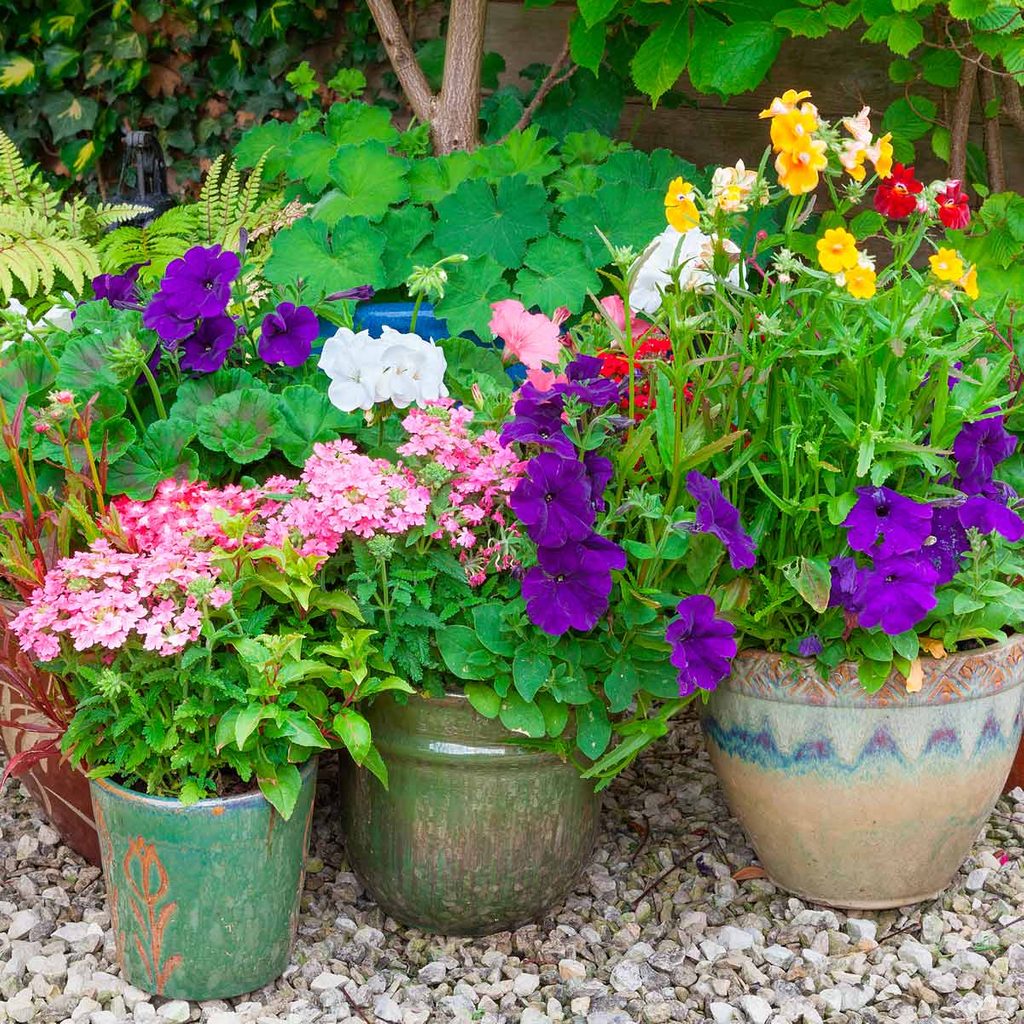The 6 Most Common Plant Problems Solved
Updated: Feb. 12, 2024

The plant doctor is in!
The Most Common Plant Problems Answered
Horticultural expert Melinda Myers answers the six most frequently asked gardening questions she hears. To get you ready, here are 13 ways to take your garden from good to great.
“Some women get flowers; I get bags of insects and dead and diseased plants,” says Myers. “But I love it. During my travels to garden shows around the country, I connect with thousands of gardeners, field their burning backyard questions and offer diagnoses.” Here are six of the most common questions they ask.
Check out these gardening hacks you’ll be glad to know:
Whether you’re new to gardening or just looking to keep things stress-free, these resilient flowers will liven up your landscape without making you constantly fuss around with them.
On This Page
1. How Often Should I Water Indoor Plants?
This probably isn’t the answer you want to hear: It depends. The amount of water a plant needs is based on type, light exposure, potting mix, temperature and humidity. If your house is warm and you’re growing a tropical plant in a sunny window, you need to water more often than someone who keeps a cool house and has less light.
When in doubt, test the moisture level by sticking your finger into the top inch or two of potting mix. Cacti and succulents like to go a bit drier, while tropical plants prefer consistently moist, not wet, soil. Pour off excess water that collects in the saucer beneath the planter to prevent root rot. (Check out my tips for reviving potted plants!)
2. What’s Wrong with My Plant?
I see this question every time I open my email inbox. First, identify the plant and get to know its ideal growing conditions and common ailments. Make sure you’ve got the preferred soil and are providing the right amounts of water and sun. Next, know the insect and disease problems common to the plant. Local university and botanical garden websites are your best online resources.
If the problem is cosmetic and won’t compromise the plant’s health, you may want to live with it, since the plant can. But if the plant’s health is in danger and you want to save it, use the most eco-friendly option available.
3. What is This Plant?
Make plant ID easier for yourself, or whomever you enlist to help, with basic information about the subject, such as age, size, growth habit and bloom time. If possible, take close-up pictures of the leaves, stems and flowers and then the whole plant. Or take a physical sample to your local garden center or extension office. Make sure the leaves, and, if present, flowers are attached. All these clues lead to a quicker and more accurate plant identification.
4. Where Did the Holes in my Hostas Come From?
Slugs are the main culprits, but earwigs, hail, frost and even falling maple seeds pierce leaves. Slugs and earwigs prefer the cool, dark locations that hostas thrive in.
There’s an easy remedy, though. Sink a shallow can filled with beer near the hostas, or set a half-empty beer bottle on its side in the hosta area of the garden. Attracted to the fermenting yeast, the slugs crawl into the container and die. You can set a trap for earwigs. Place a piece of crumpled paper under an overturned flowerpot overnight. In the morning, lift the pot and shake the paper over a can of soapy water. This is a natural way to check for, and control, backyard earwig populations.
5. Is it a Weed or a Flower?
First, keep in mind that a weed is just a plant out of place. Even good plants are deemed weeds if they’re unwanted in your garden. If a mystery plant fits any or all of these descriptions, you may have a weed on your hands:
- It’s multiplied considerably since last year.
- It’s sprouted up throughout the bed and surrounding lawn.
- It has been in the garden for a few years, never seems to bloom and has unimpressive foliage. (But remember: Perennials and biennials do not bloom in the first summer, and some plants need a few years to establish and flower.)
- You don’t like it. Once you decide a plant must go, keep the aggressive ones out of your compost pile or they will return. Dispose of them as recommended by your municipality. If it’s just a matter of taste, find a gardener willing to take an ugly duckling off your hands.
6. Why is There White Powder on my Plant’s Leaves?
It’s a fungal disease called powdery mildew. Lilac, a highly aromatic plant, is a common victim of powdery mildew. Over time it blocks sunlight, causing foliage to turn yellow and, in severe cases, drop off. Fortunately, this disease doesn’t usually kill healthy plants, though it does affect appearance and reduce vegetable productivity.
If this disease is an annual problem in your garden, it may be time to take action. Plant something a bit shorter in front of the susceptible specimen. The shorter plant masks the unsightly mildewed leaves but allows you to enjoy the blossoms.
If you want to take a more aggressive course of action, organic products are available. Do a thorough cleanup and discard infected leaves in fall to reduce the source of disease next year. Stop powdery mildew before it starts by choosing mildew-resistant varieties whenever possible. Give plants plenty of room and sunlight; sufficient light and airflow reduce the risk of the disease.